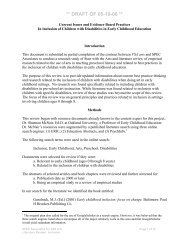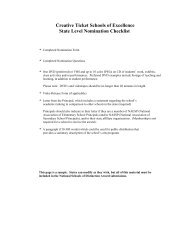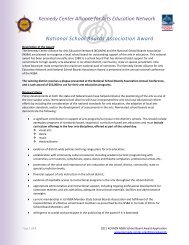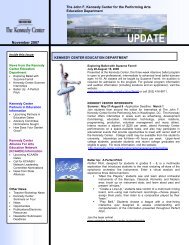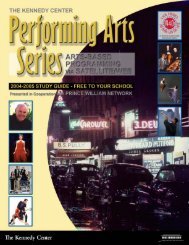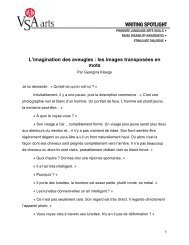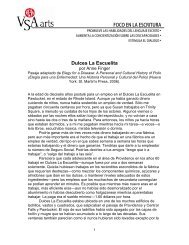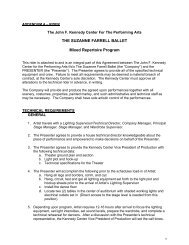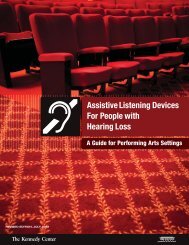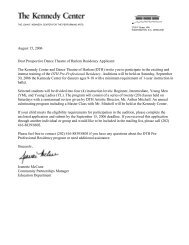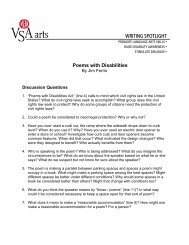Playwright Discovery Award Teacher's Guide - The John F. Kennedy ...
Playwright Discovery Award Teacher's Guide - The John F. Kennedy ...
Playwright Discovery Award Teacher's Guide - The John F. Kennedy ...
You also want an ePaper? Increase the reach of your titles
YUMPU automatically turns print PDFs into web optimized ePapers that Google loves.
FOR THE ARTIST’S NOTEBOOK:<br />
<strong>The</strong> Dramaturg’s Second-Best Tool:<br />
Listening Well<br />
<strong>The</strong> second part of asking an Open<br />
Question is listening well, which means<br />
listening to what’s said, not for the<br />
answer one wants to hear.<br />
• Listen for words the artist uses but the<br />
characters do not.<br />
Sometimes the writer describes characters out<br />
loud one way and sets them on paper another<br />
way.<br />
A writer may describe a self-important<br />
character by adopting a different vocal pattern<br />
and repeating the word “fabulous” every fourth<br />
word. A dramaturg can help a writer notice<br />
that the dialogue isn’t written in dialect and the<br />
word “fabulous” never appears in the script.<br />
For example, the revised version:<br />
SUZIE’S MOTHER<br />
Suzie, dahhling. Thahht’s fabulous!<br />
As the writer describes what she or he would<br />
like to see happen in the play or scene, think<br />
about where the writer can add these details.<br />
• Listen for what drives the artist to pursue this<br />
project, the passion.<br />
• Listen for what excites the writer about the<br />
story. Passion, if nothing else, keeps the<br />
journey going when times get rough and the<br />
rewriting process seems long.<br />
For example, in the original draft:<br />
Oh, Suzie.<br />
SUZIE’S MOTHER<br />
• Listen for places where the writer can be<br />
more specific.<br />
ACT III: DRAMATURGY 45



